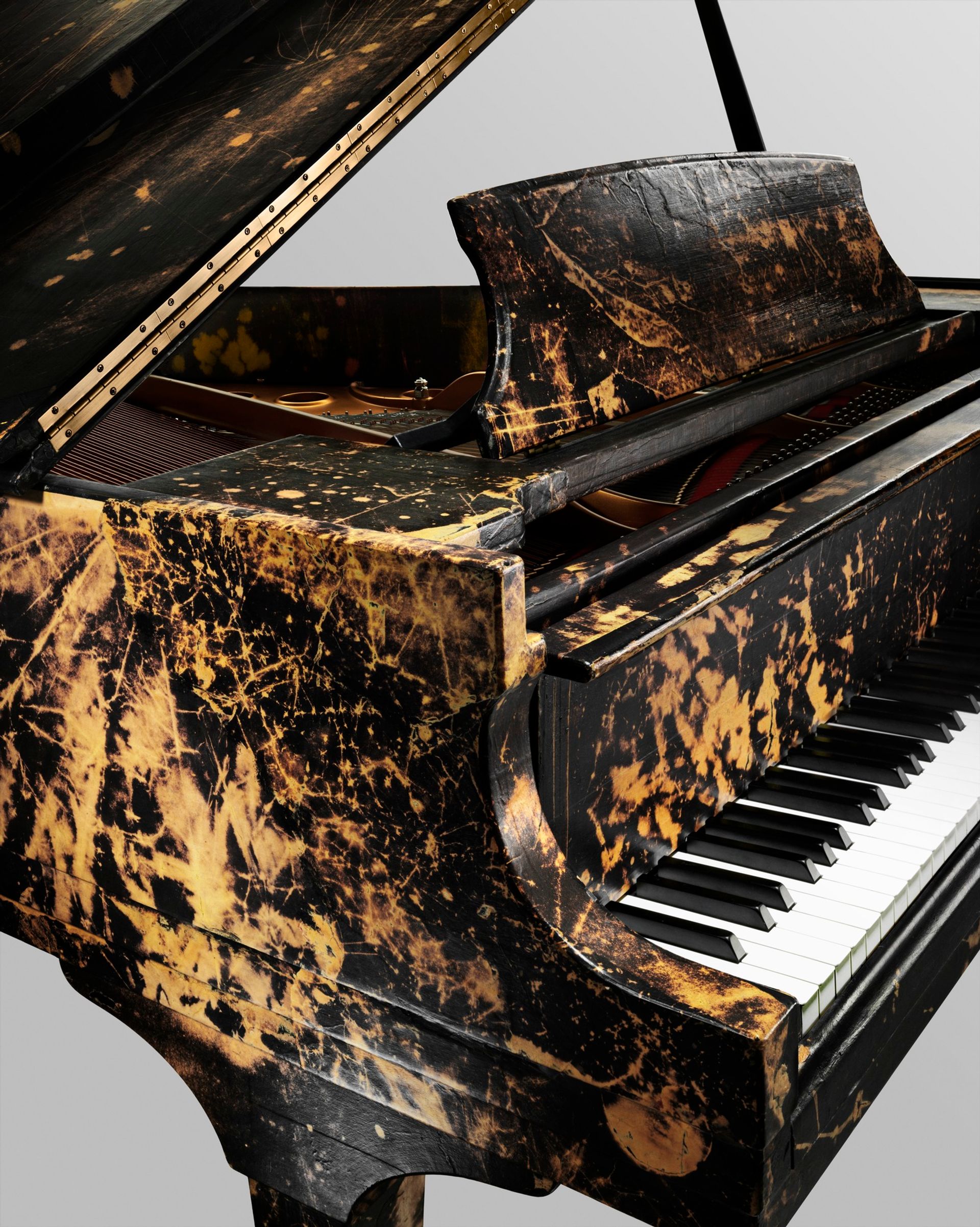A high-tech player piano, decorated by the Los Angeles artist Mark Bradford and programmed to play a new score by the Grammy-winning jazz composer Robert Glasper, is the first in a series of three artistic collaborations organised and commissioned by the historic piano-makers Steinway & Sons. The unique object, Apollo/Still Shining, is due to be auctioned (with an estimate of $400,000 to $600,000) during Christie’s Post-war and contemporary art day sale in New York on 11 May, to benefit three museums: the Walker Art Center in Minneapolis, the Museum of Contemporary Art in Los Angeles, and the Studio Museum in Harlem.
The project involves a Steinway Spirio “self-playing” piano, a new model with an integrated laser-guided system that measures the velocity and pressure of each keystroke. This allows it to recreate a pianist’s performance so accurately that it can seem uncanny. “It’s like you died and your ghost is playing the piano. It was really eerie to watch,” Glasper tells The Art Newspaper of his experience recording the score Still Shining.

The collaboration is inspired in part by issues of race and social unrest in the US. Glasper’s composition has four parts, rising from the quiet lyricism of Tranquility to the discordant Unrest-Violence-Rescue before returning to the more melodic Rebirth and a coda of the opening theme. For his part, Bradford has covered the piano in singed and bleached paper to create a surface that appears to be licked by gold flames. The collaged work is fittingly titled Apollo, after the Greek god of light, music and healing. (Glasper’s score will be available to anyone who buys a Spirio piano, but Bradford’s surface is unique.)
This is the first time that Glasper has worked with a visual artist, but like any good jazz musician he seems to have relied on his riffing skills. “We talked on the phone about the direction, and what he may do. But I just told him to make the piece and send me a picture, so that I can live with it for a minute,” Glasper says. “I’m an improviser. I didn’t want to discuss things too much.” He did, however, set Bradford’s picture as the screensaver on his phone, so that he would “look at it every day, all the time”. This led to a kind of audio-visual free association, with ideas sparked “just based off of where I was when I looked at my phone”, Glasper adds.
The project also has a personal resonance for both artists. Bradford attributes his use of bleach and paper to his time working as a hairdresser in his mother’s salon. “I would take end papers and soak them in bleach to dye clients' hair,” Bradford says in a statement. “Here, I am interested in the pattern of flux created by this bleaching effect.” Glasper’s mother, meanwhile, was also a pianist, so although they had an upright at home, he would often walk into stores just so he could play on a grand piano. Often, the young black musician would “get the weirdest looks” and sometimes he would be asked to leave—his mother once returned with him to the store to complain when that happened—so becoming a Steinway artist “means so much”, Glasper says.
Before the work is auctioned, it is due to be displayed in a number of preview events starting in April, including in Bradford’s home city of Los Angeles at UFO-Space. It will then be transported cross-country to New York ahead of the auction at Christie’s, with Glasper due to perform his piece live on 4 May, during a panel discussion with Bradford and the Studio Museum’s director and chief curator Thelma Golden.
Two other Steinway Commission projects are due to be completed over the next two years, with all the works to be auctioned to benefit the three partner museums.
Correction: Apollo/Still Shining will be shown in Los Angeles at UFO-Space, not the Museum of Contemporary Art.

